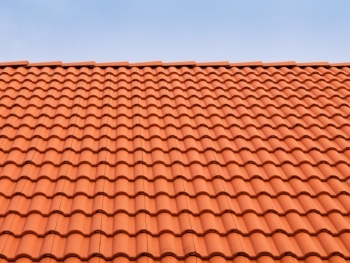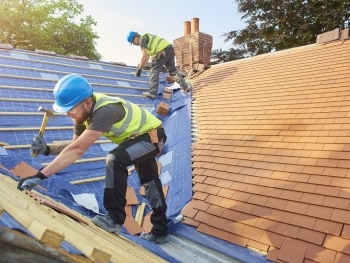Choosing the right roofing material for your home is a crucial decision that impacts the longevity, energy efficiency, and aesthetic appeal of your property. With numerous options available, it's important to understand the benefits and drawbacks of each material to make an informed choice. This guide will walk you through the key factors to consider and the most popular roofing materials to help you select the best option for your home.
Factors to Consider When Choosing Roofing Material
- Climate and Weather Conditions
- The local climate plays a significant role in determining the best roofing material for your home. For example, in regions with heavy rainfall or snow, you’ll need materials that offer excellent water resistance and durability. In contrast, areas with high temperatures may benefit from materials that provide good insulation and heat reflectivity.
- Architectural Style
- Your home’s architectural style should complement the roofing material. Some materials, like slate and wood shingles, are ideal for traditional and historic homes, while metal and asphalt shingles often suit modern designs.
- Durability and Lifespan
- Different roofing materials offer varying levels of durability and lifespan. Consider how long you plan to stay in your home and the long-term maintenance costs associated with each material.
- Cost and Budget
- Roofing materials vary widely in cost, both in terms of initial installation and long-term maintenance. Determine your budget beforehand and weigh the upfront costs against the potential savings in maintenance and energy efficiency.
- Energy Efficiency
- Energy-efficient roofing materials can help reduce your home’s heating and cooling costs. Look for materials with good insulating properties or those that reflect heat away from your home.
- Local Building Codes and HOA Regulations
- Ensure that your chosen roofing material complies with local building codes and any Homeowners Association (HOA) regulations. Some areas may have restrictions on certain materials or colors.
- Environmental Impact
- If sustainability is important to you, consider the environmental impact of your roofing material. Some materials are more eco-friendly than others, offering recyclability and reduced energy consumption during manufacturing.
Popular Roofing Materials
- Asphalt Shingles
- Pros: Affordable, easy to install, wide variety of colors and styles, good fire resistance.
- Cons: Shorter lifespan (15-30 years), can be damaged by high winds, not as eco-friendly.
- Best For: Most architectural styles, particularly popular in suburban neighborhoods.
- Metal Roofing
- Pros: Long lifespan (40-70 years), durable, lightweight, recyclable, energy-efficient.
- Cons: Higher upfront cost, noise during rain, may require additional insulation.
- Best For: Modern and contemporary homes, areas prone to wildfires or heavy snow.
- Wood Shingles and Shakes
- Pros: Natural appearance, good insulation properties, can last 30-50 years with proper maintenance.
- Cons: High maintenance, susceptible to fire, may be prone to rot and insect damage.
- Best For: Historic and traditional homes, cottages, and rustic designs.
- Slate
- Pros: Extremely durable (can last over 100 years), fire-resistant, low maintenance, elegant appearance.
- Cons: Very heavy, expensive, requires professional installation.
- Best For: High-end homes, historic buildings, and homes with steep roofs.
- Clay and Concrete Tiles
- Pros: Long lifespan (50-100 years), fire-resistant, low maintenance, excellent for hot climates.
- Cons: Heavy, expensive, may require additional structural support.
- Best For: Mediterranean, Spanish, and Southwestern-style homes.
- Synthetic Roofing Materials
- Pros: Lightweight, durable, often made from recycled materials, can mimic the appearance of other materials.
- Cons: Varies in quality, can be more expensive than asphalt shingles.
- Best For: Various architectural styles, homeowners seeking eco-friendly options.
- Solar Tiles
- Pros: Generate electricity, reduce energy costs, blend with traditional roofing materials.
- Cons: High upfront cost, availability and installation expertise can be limited.
- Best For: Eco-conscious homeowners, modern and contemporary homes.
Making the Final Decision
To make an informed decision, follow these steps:
- Evaluate Your Needs and Priorities
- Determine which factors are most important to you—whether it’s durability, cost, aesthetic appeal, or environmental impact.
- Research and Compare Options
- Gather information on the different roofing materials and compare their pros and cons relative to your needs.
- Consult with Roofing Professionals
- Seek advice from professional roofing contractors. They can provide insights based on your specific location and home structure, and offer estimates for different materials.
- Consider Long-Term Costs
- Look beyond the initial installation cost and consider the long-term maintenance, repair, and energy costs associated with each material.
- Check References and Reviews
- Read reviews and ask for references from homeowners who have used the materials you are considering.
- Make an Informed Choice
- Based on your research and professional advice, choose the roofing material that best meets your requirements and budget.
Selecting the right roofing material is a crucial decision that affects the protection, appearance, and value of your home. By considering factors such as climate, architectural style, durability, cost, energy efficiency, and environmental impact, you can make an informed choice. Take your time to research and consult with professionals to ensure that your new roof will provide lasting benefits and enhance your home’s overall appeal. For expert advice and high-quality roofing services, contact Portland Roof Repair today.





